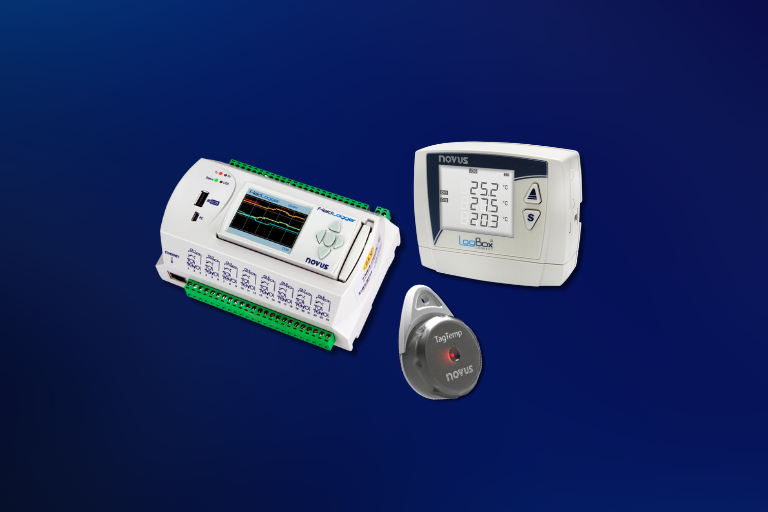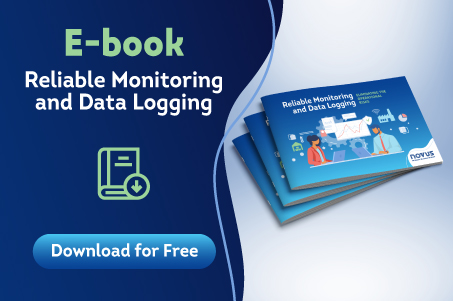Data logging: How many acquisitions can be stored in a data logger?
A common question asked by users of data loggers refers to the number of logs that can be made in the memory of the device. Another question related to data loggers involves how long it takes to log a certain amount of data. While an approximate number is reasonably simple to obtain, the exact number is not always.
NOVUS products have 2 basic registering modes: One logs until the memory is full and the other keeps registering data after the memory is full, overwriting the older logs with the newer ones. Also, it is important to note that the number of logs that the memory allows is shared by all the enabled channels of the data logger. The more channels are being registered, the faster the memory will be filled.
In a hypothetical example, imagine a data logger with a memory of 32,000 logs, with 2 channels enabled and with a log interval of 20 seconds. In this case, we will have:
32000 logs / 2 channels = 16000 logs/channel = 16000 time instants registered
Log interval of 20 seconds = 3 time instants (logs from all channels) per minute
16000 / 3 = 5333.3 minutes
5333.3 / 60 = 88.89 hours
88.89 / 24 = 3.7 days
This is the approximate amount of time to fill the memory of the data logger in this configuration and is typically sufficient for the user to plan well.
The exact number depends on the log strategy used by each type of data logger (LogBox, TagTemp, FieldLogger), which always looks for the most reliable and efficient method to store data in hardware memory. The existence of gaps in the register, caused by power outages or due to configuration (by selecting the “Log only when in alarm situation” option, for example), also disqualify the previous calculation.
To avoid any loss of logs, NOVUS implemented redundant systems, which operate without power supply if there is a power outage or if the connection to transfer data is lost.
To find out more, contact our experts. Click here.
Keep reading:
Data logger: What is it, who uses it, and how to calibrate it
FieldLogger was not NOVUS first data logger
Data logging in sanitation: How to have greater control and avoid excessive losses


















